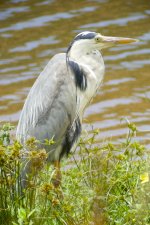Gee Guys - how difficult is it to set up a digiscope arrangement ?
Newly enjoying some birding and wanting to up my game, I purchased a Pentax PF65 spotting scope, largely due to the fact that it has a standard 1.25" eyepiece fitting. I have done some astrophotography with a Celestron telescope using my Nikon DLSR on a T adapter, quite successfully I might add, and I hoped to share the eyepieces and use the same DLSR setup. However, much to my disappointment, I cannot use my Nikon T adapter as the resulting focal plane is nowhere near the camera's. The telescope is certainly not ideal to lug around for birding. I also have a Fujifilm X20 and could possibly adapt it to the scope 43mm eyepiece with a step-up ring, but my preference would be to connect directly to the scope with the camera body as I do with my telescope, no eyepiece involved (too much glass). One possibility is to use the Pentax CA-35 adapter and acquire a Pentax K camera body. But the former seems to be no longer produced and unavailable.
Any suggestions - or an offer to sell the Pentax adapter - would be greatly appreciated?
Newly enjoying some birding and wanting to up my game, I purchased a Pentax PF65 spotting scope, largely due to the fact that it has a standard 1.25" eyepiece fitting. I have done some astrophotography with a Celestron telescope using my Nikon DLSR on a T adapter, quite successfully I might add, and I hoped to share the eyepieces and use the same DLSR setup. However, much to my disappointment, I cannot use my Nikon T adapter as the resulting focal plane is nowhere near the camera's. The telescope is certainly not ideal to lug around for birding. I also have a Fujifilm X20 and could possibly adapt it to the scope 43mm eyepiece with a step-up ring, but my preference would be to connect directly to the scope with the camera body as I do with my telescope, no eyepiece involved (too much glass). One possibility is to use the Pentax CA-35 adapter and acquire a Pentax K camera body. But the former seems to be no longer produced and unavailable.
Any suggestions - or an offer to sell the Pentax adapter - would be greatly appreciated?







